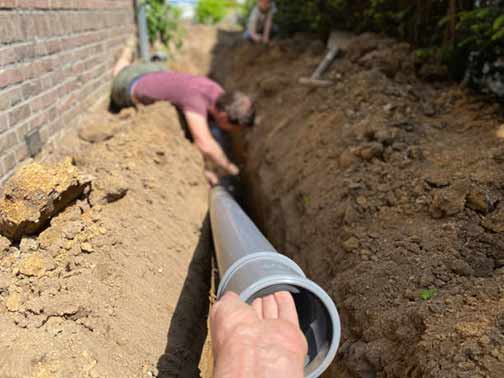
When the fields around your home turn golden, and the trees begin to shed their leaves, you know fall is here, and it will not be long before winter. That is often your first sign that it is time to start to get your home ready for the incoming cold weather.
This fall, as you prepare your home for winter, please do not forget your sewer lines, notes Service Star Management. Sewer lines are typically not the first thing you consider when winterizing your home. Somehow, in our minds, the sewer line can make it through winter without our help.
But this is not completely true; winter has a far bigger effect on your sewer line than you think. As the weather changes and becomes colder, the pipes in your sewer line also change in little ways that you may not notice. For instance;
Since sewer pipes are mostly made of copper or PVC, they can expand and contract as the ambient temperature rises or falls.
When sewer lines contract, they become narrower. That means less space for sewage to flow through. It is one reason why your sewer line clogs in winter.
Frozen sewer line vents are also a common problem in winter. Blocked vents prevent sewer gases from escaping, resulting in problems with the drains inside your home.
Blocked sewer vents and clogged drainpipes can also reroute sewer gases into your house, fouling up the air and putting your family’s health at risk.
These problems can be avoided if you take the necessary steps to prepare your sewer line for winter as fall arrives. Below are some effective and easy-to-do steps for maintaining your sewer line in the fall to avoid drain problems in winter.
Sewer line maintenance tips for fall
- Take steps to prevent abuse of the sewer line
Most problems in your sewer line are due to avoidable human actions. Small everyday things you do in your home can endanger your sewer line. Here are some things to avoid:
- Do not dump FOGs (fats, grease and oil) into your drains. When cold, they congeal into a hard mass that encourages the sewer line to clog and block.
- Avoid putting starchy food (mashed potatoes or rice), stringy vegetables (celery), coffee grinds, and eggshells into the kitchen sink or other drains.
- Only toilet paper, water and human waste should go into the toilet. Avoid putting so-called flushable items into your toilet.
- Install strainers on drain openings. By catching hair and debris that would have ended up inside the drain, they keep your sewer line healthy.
- At least once every two weeks, pour hot water into drain openings to clear any debris inside the drainpipes.
- Inspect the sewer line
Inspecting your sewer line gives you a detailed overview of the sewer condition. This inspection should be done by an expert; they have a proven system and the right tools. Non-professionals, such as yourself, may overlook important details if you try to DIY the inspection.
- Look for signs of trouble
The main goal of camera inspecting your sewer line is to find signs of impending problems. By detecting the issues in your sewer line before they become an emergency in your home, you keep the cost of repairs low. Some of the things you want to look out for are slow drains, signs of possible backup and unusual odors or sounds.
- Prevent sewer line damaged by tree roots
After months of rapid growth during spring and summer, tree roots may be entering the location of your sewer line. You may need to hire root-cutting equipment to deal with this problem (please note that this is a job for professionals). Also, keep in mind that the roots of previously removed trees can still pose a threat to your sewer line.
- Have the sewer line cleaned professionally
Fall is the best time to remove all the junk accumulated inside the pipes during spring and summer. That will give the sewer line a new lease of life going into winter. Cleaning your sewer line reduces the rate of pipe corrosion. Hydro-jetting (a drain-cleaning solution) the line helps remove sludge, FOGs and tree roots while also washing the pipes clean.
- Fix any damage to the sewer line
Problems in your sewer line will not become easier to fix. Issues not solved today will worsen and cause more expensive damage in the coming months. If you are working with an experienced plumber, they can advise you on how to fix your sewer line problems most affordably.
Remember that the cost and consequences of sewer line problems during winter can be hefty. You don’t want your sewer line malfunctioning when your home is snowbound. The best time to deal with these issues is during the fall.


